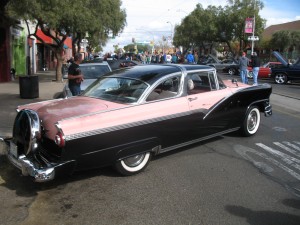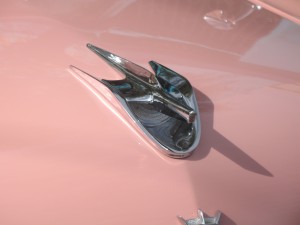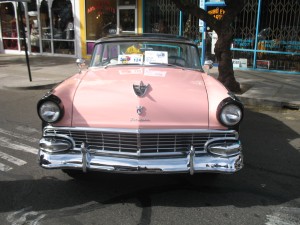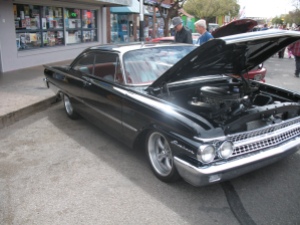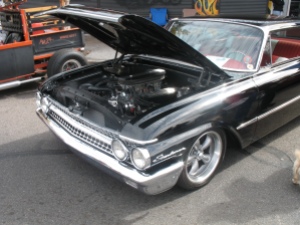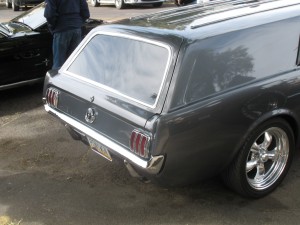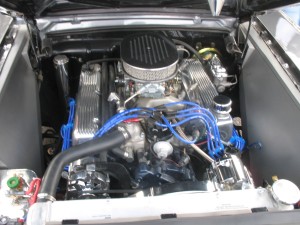As I start gathering the different parts for all the new mods for my ’70 Mustang one thing I’m sure of is that I want a little more ‘bling” under the hood. I think the Ford blue engine paint with the brushed nickel look of the current intake need something to offset that color scheme. I’d like to do most of the brackets for the power steering, alternator, and ac compressor all in chrome. However that’s not going to be possible, if I rely on aftermarket/stock suppliers, as most of my brackets are custom-made. (That’s what you get when you keep the 6 cylinder components when you do a conversion to an 8 cylinder.) So I’m going to make do with what I can find and the rest will remain iron.
Now with the cost of all this mods looming on the horizon and having less than the average budget, I’m trying to upgrade at least the tension portions of the Alternator, A/C and the power steering to chrome. My goal is to replace them with heim joints w/adjustable rods between them. These are not inexpensive and often require some modification.
So in the pursuit of this end I purchased a kit from Summit Racing for my alternator. This was an all aluminum kit and only advertised as being for a ‘stock” 302 engine. So going in I knew that it might not work at all. This turned out to be correct except for the heim joints and the threaded aluminum rod.
So I going to use those for the tension rod for the alternator. However, it wasn’t chrome and had a very heavy coding to make it look like brushed nickel. The goal for this pieces was to polish it up and see how “bling” like it could look. This would be a series of repeated sanding, buffing and polishing.
I used my Dremel, sanding disks and buffing and polishing wheel, 200 and 600 grit sand paper and Purple Metal polish, cotton rag (ok..fine it was an old t-shirt) and a vice.
Now the 160 grit disk might have been a bit much but the coating was pretty tough and the disc made quick work but did leave a few marks on the test sample that might have causes a bit more work with the lighter grits.
In short the process started with hitting the test piece (one of the stock bracket parts that wouldn’t fit) with the 160 grit disk via the Dremel. Next I ran the 220 grit sandpaper (by hand) over the aluminum and then the 600 grit and then with the buffing/polishing wheel via the Dremel with a coating of the Purple metal polish. I switched it up by using some metal polish with the 600 grit sandpaper.
It took a lot of elbow grease and a couple of hours. Here is what the test piece looks like. You can see the aluminum w/coating and polished portion.
Now there are some in perfections in the aluminum and if not being careful with the sanding you can leave gouges but generally you can get this type of shine and it looks very close to chrome without the cost, just some elbow grease.
Next will be the polishing of the actual rod that will connect the two heim joints (they are already polished steel). (I’ve already started, but you won’t see it until it complete.)
Thanks for reading.
Tim
















